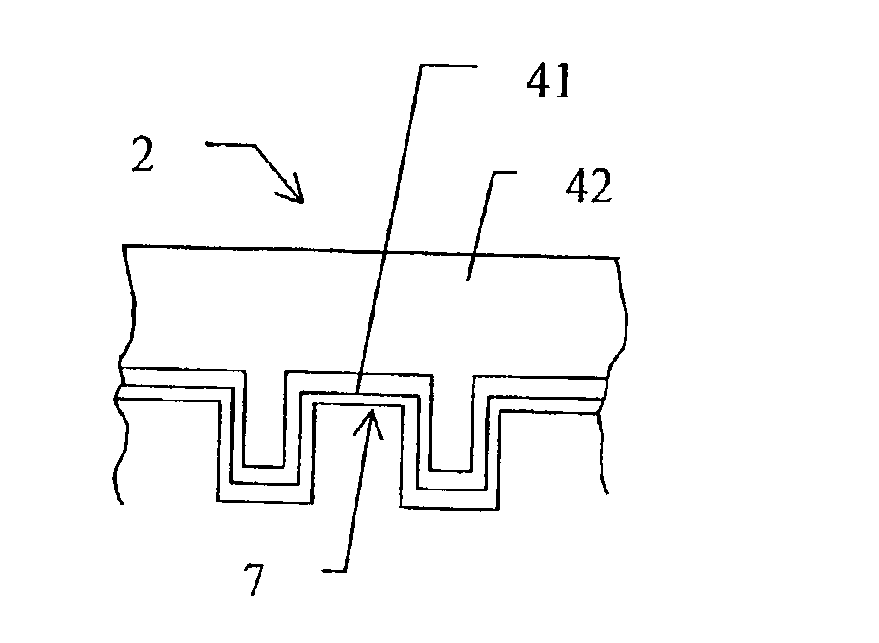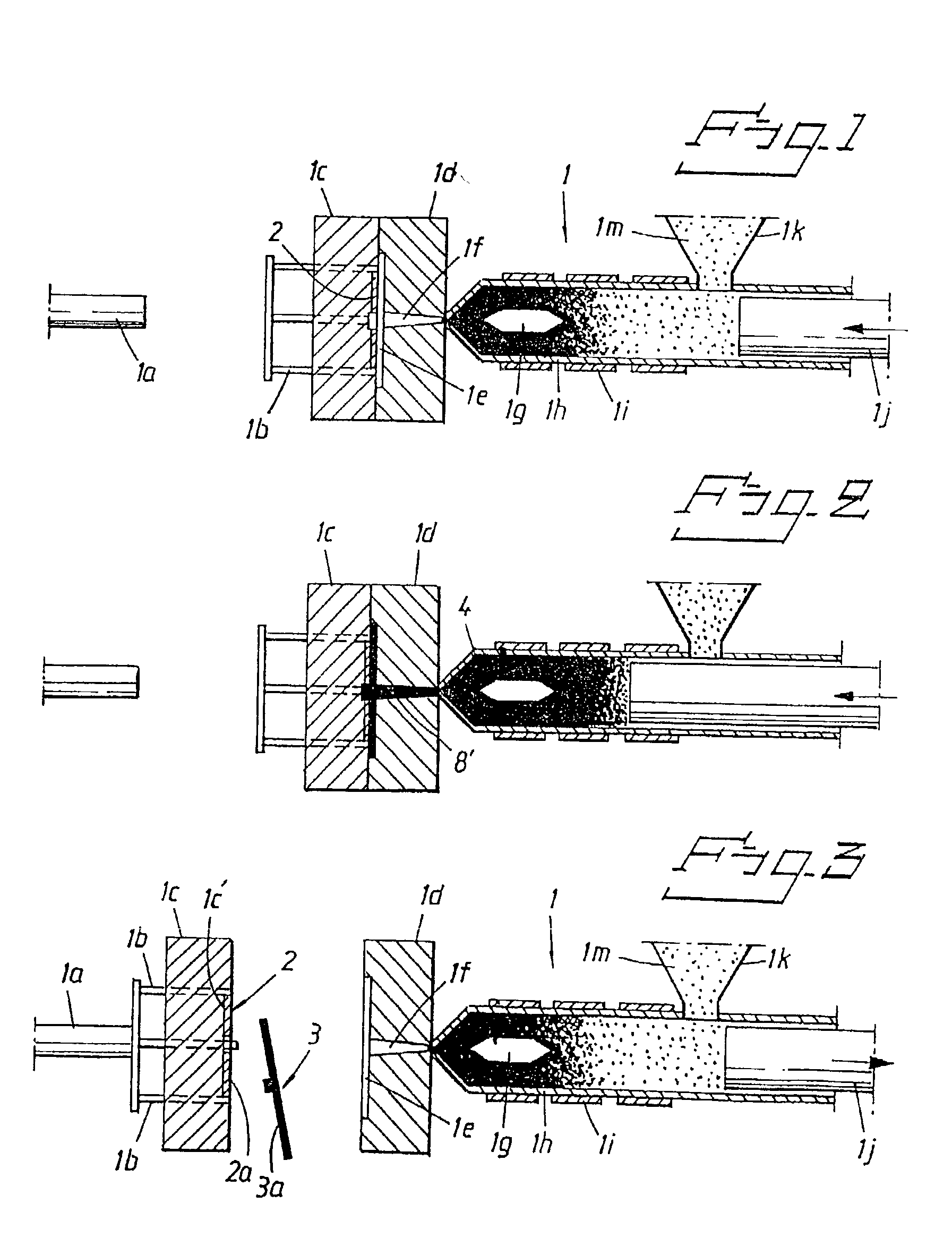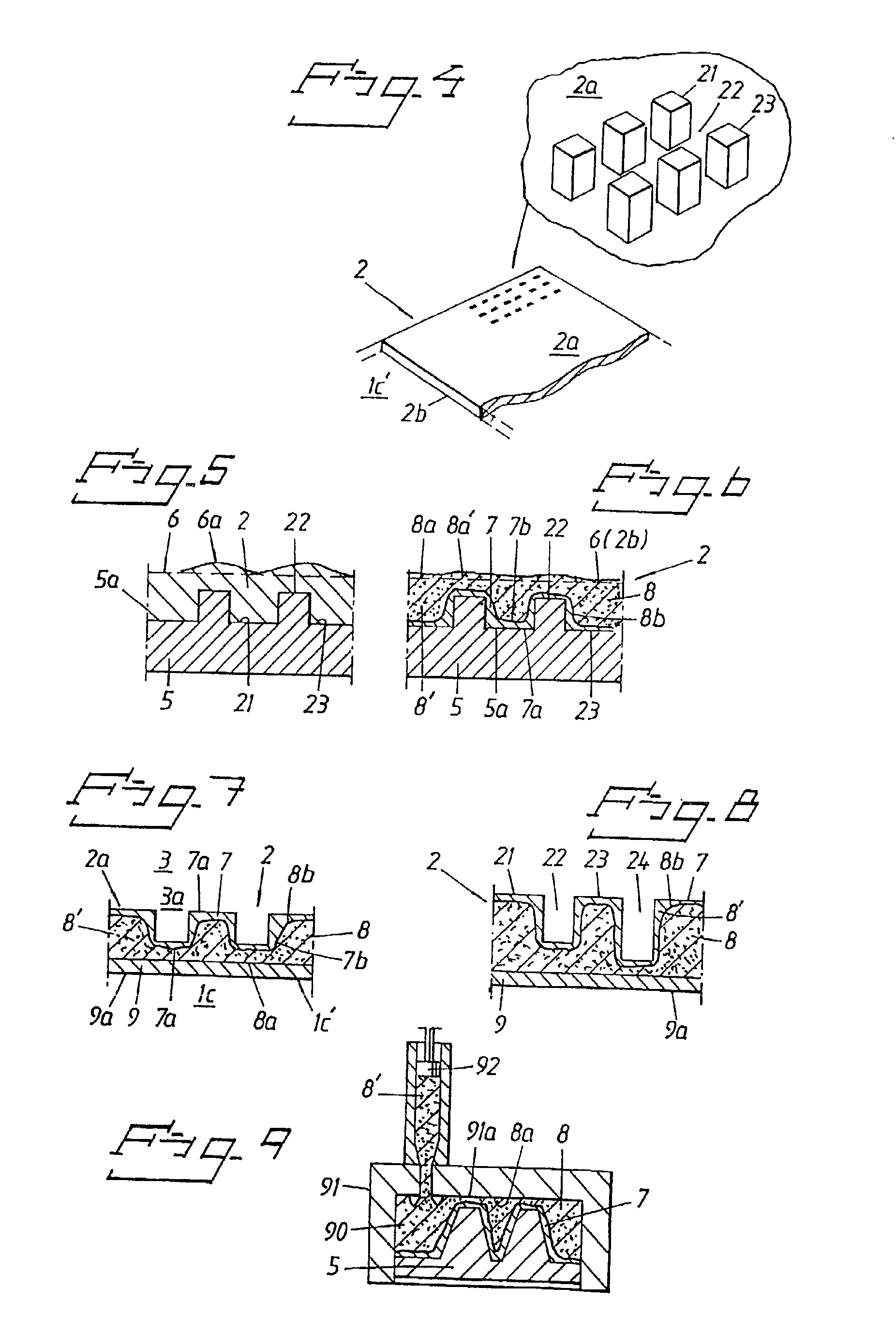Matrix and method of producing said matrix
- Summary
- Abstract
- Description
- Claims
- Application Information
AI Technical Summary
Benefits of technology
Problems solved by technology
Method used
Image
Examples
Embodiment Construction
[0134] The present invention relates to a method of producing a matrix 2, in particular a matrix 2 adapted for use in a compression moulding, embossing, injection moulding and / or other plastic element-producing press 1 One surface of the matrix 2 is given a negative microstructure 2a that can be replicated as a positive microstructure 3a on a plastic element 3 in the injection moulding press 1.
[0135] The method by means of which the matrix 2 is produced will be described in more detail below with reference to FIG. 6.
[0136] For the sake of simplicity, the following description assumes that solely the moveable mould half is provided with a matrix 2 that has a microstructure 2a, although the person skilled in this art will realise that the fixed mould half may also be provided with such a matrix
[0137] Thus, FIGS. 1-3 illustrate schematically an injection moulding press I that includes an ejector rod 1a, a number (3) of ejector pins 1b, a moveable mould 1c and a fixed mould 1d.
[0138] Th...
PUM
| Property | Measurement | Unit |
|---|---|---|
| Thickness | aaaaa | aaaaa |
| Structure | aaaaa | aaaaa |
| Electrical conductor | aaaaa | aaaaa |
Abstract
Description
Claims
Application Information
 Login to View More
Login to View More - R&D
- Intellectual Property
- Life Sciences
- Materials
- Tech Scout
- Unparalleled Data Quality
- Higher Quality Content
- 60% Fewer Hallucinations
Browse by: Latest US Patents, China's latest patents, Technical Efficacy Thesaurus, Application Domain, Technology Topic, Popular Technical Reports.
© 2025 PatSnap. All rights reserved.Legal|Privacy policy|Modern Slavery Act Transparency Statement|Sitemap|About US| Contact US: help@patsnap.com



